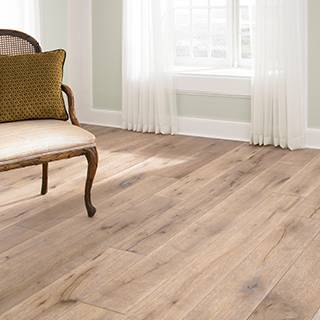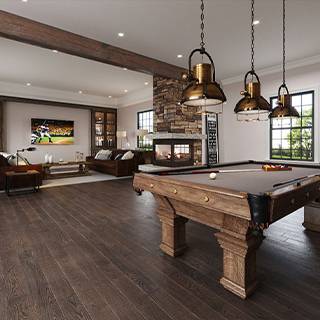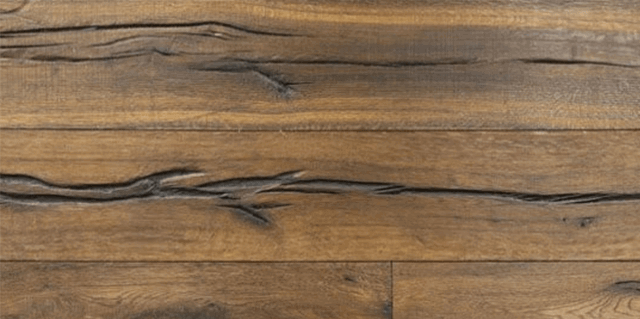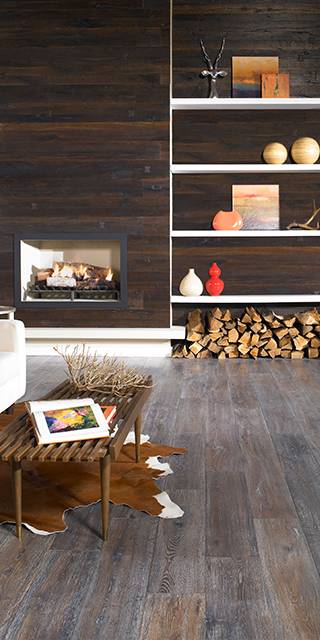Matching Existing Hardwood to New Flooring
December 21, 2015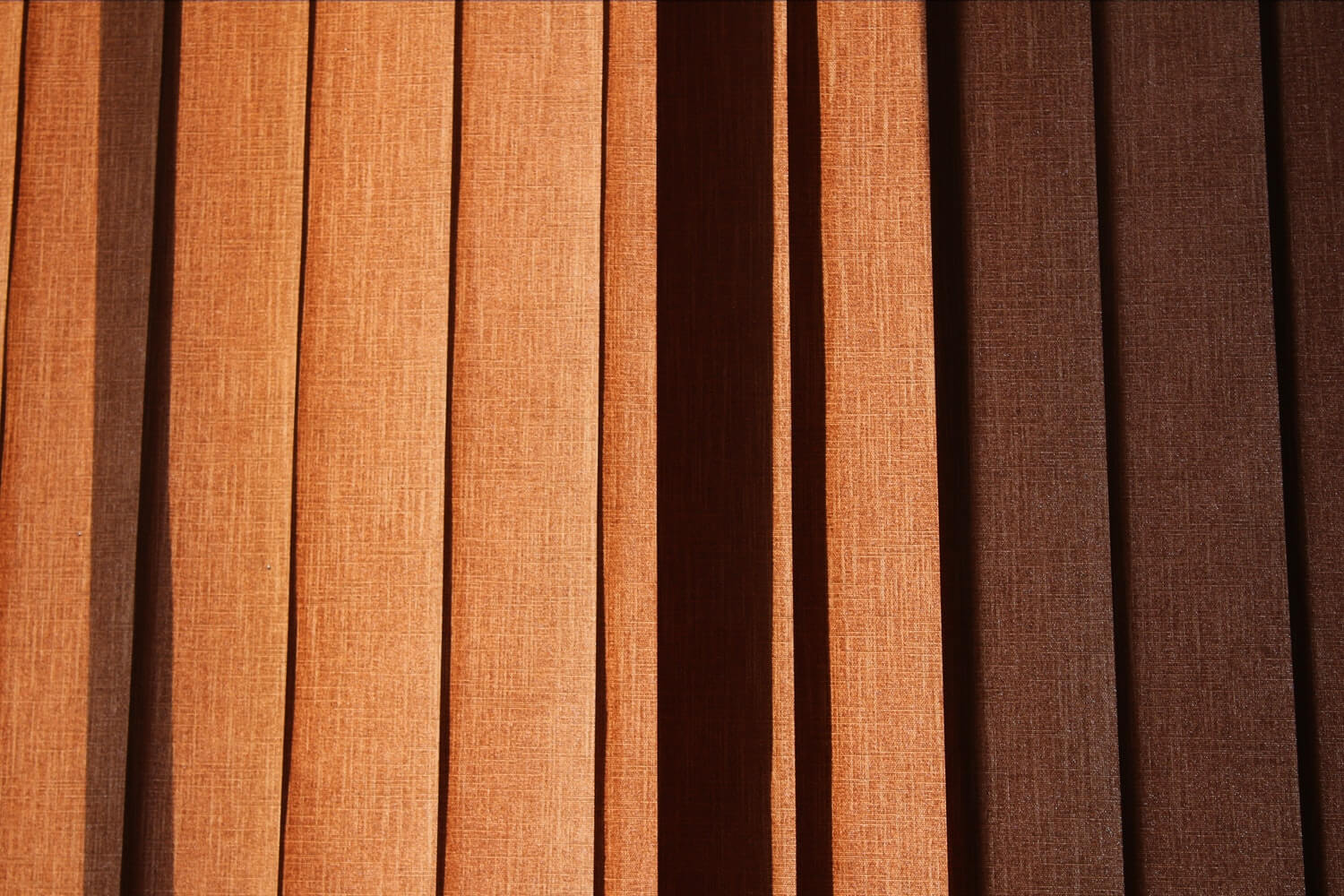
With the housing market on the upswing, a lot of folks are starting to think about home improvements to keep their property up to date and hold on to market value. It is widely accepted that hardwood flooring is an all but guaranteed value add for any home, and our 2015 designer survey confirmed that hardwood throughout the home, rather than in just a few rooms, is preferable. So what do you do when a few areas in your home already sport hardwood flooring and you want to spread the joy to the rest of the house? Well, you have a few options.
Depending on the age of your existing flooring, you may be able to simply lay the new flooring as you would any other, especially if your existing hardwood was prefinished. If your floors are young enough that inevitable color-changes have yet to set in, you may be able to simply order more of the same brand and style and have them match quite well. Of course, every batch of hardwood comes from a different tree and may have certain characteristics associated with regional harvesting, but the match should be close enough that careful board matching at the transitions (choosing the boards from the new batch that most closely match the existing flooring) should yield pretty satisfactory results with very little hassle.
If your flooring was site-finished, but not very long ago, you may have similar luck. You can order more of the same kind boards – be sure to match everything: species, grade, length and width, and thickness – and the same stain and are likely to get pretty good results, though it may take a few months for the newly stained areas to really match seamlessly. Matching site-finished wood can be a little trickier, though, especially if you have a custom-mixed stain, so it is often worth it to have a professional installer come in on the project.
If your wood is older than 5 or 10 years (depending on the wood, stain, etc.), you may a little more trouble getting a seamless transition. Nevertheless, there are a lot of options open to you.
Don’t try to match it
Though matching new wood to existing wood is certainly possible, doing so is not always the best option.

Lay a contrasting floor
With the wonderful variety available in hardwood, you may find that laying a contrasting floor with serve your purposes just as well as trying to extend your existing flooring. Especially in cases where a transition is from room to room through a doorway or other narrow space, choosing a complementary wood for the new flooring can often create an appealing effect, especially if you carry this theme throughout the home.
Take up the old floor
Another thing you should consider is how attached you are to the old flooring and how much of it there is. If you are dealing with a relatively small space or existing flooring in need of significant repair, it may be worthwhile (and ultimately more cost effective) to pull up what you already have and start over. Many homeowners find that, once they do the calculations, whole-floor project ends up costing less in the end than trying to match and repair. This is especially the case if the whole floor replacement can be a DIY project, since matching will almost always require the assistance of a professional.
Match it
Now, many homes are blessed with original wood flooring that, in itself, adds value and beauty to the home. Understandably, homeowners generally do whatever they can to maintain the integrity of these floors. In such instances matching new hardwood – perhaps to an addition to the home, a room previously floored with carpet or tile, or to a heavily damaged area– is a bit more complicated, but definitely worth it in most cases.
Before beginning such a project, there are a few things you will want to find out about your wood. This may be information you already have, depending on how much access you have to the house’s history, but you can also call a flooring expert who can come out and tell you what you need to know, including species, width and length, cut, grade, thickness, and finish. The more of these factors you can match when ordering the new wood, the more likely you are to get a good match. As indicated above, it is also helpful to know the age of your floor to help judge how much more it is likely to change and when it might be due for a re-finish.
You will also want to consider the size of the new area to be floored. Might you take matching wood from another area of the house where it is less important to have an exact match? Is there an attic or storage area where spare boards might be stored? Is the attic itself finished? If it’s been well-maintained, this could a great source for boards that are at least of the same basic material and age of the floor you are trying to match.
With all these things I mind, you are ready to pursue the great matching mission. Here are some options, in progressing degrees of exactness (and difficulty).
Close enough
With the information above, you should be able to get a pretty close match to your existing wood, but variations in age, color changes due to exposure, and even variations between trees within a species will make it difficult to get the kind of exact match that will look seamless where the floors butt up to each other. If the transition occurs in a hallway or other area with a narrow entry, but no door, rug can often serve to cover the seam and trick the eye into missing slight differences of hue. This can be especially helpful during the time when a newly stained floor is settling in.
In addition, as Kelly Cartesian notes, the style + color of the rest of the room should be keep at the top of mind when researching. She gives an example with the Shabby Chic design style:
“In a room where the entire interior of the house is painted in one uniform color say white, it is customary for Shabby Chic design to concentrate on a single bold accent color to establish a visual contrast with the rest of the space. For instance, you can decide to use a Turquoise floor to create a contrast with the white color for example.”
If the transition is in a wider space or an area where a rug seems unnatural, a change in the direction of the wood (perpendicular or diagonal to the original floor) can make a near match look like an exact match and create a striking look that calls attention to the beauty of the floors. Also consider – if you are outfitting an upstairs area with flooring to match your downstairs, you may find that an exact match to the existing floor (perhaps taken from a closet) on the top face of the stairs and a very near match on the front face will create a natural transition that masks slight differences because of the changing direction of the wood.
 T-molding and Transition strips
T-molding and Transition strips
There are a number of ways to use transitional strips of wood to break up a seam between existing floors and new ones, helping to mask slight differences in their hue or color. Transitional pieces can take the form of T-moldings – narrow, raised strips of wood that bridge the outside boards of each “floor” – or flush strips, which fit between the outside boards of each area, becoming part of the pattern of the floor. Both help to mask slight mismatches in the same way a rug might, but to more permanent effect.
Weave in the new boards
Also called “lacing” or “threading” the boards, this is a way to blend existing and newly installed hardwood flooring in areas where you are looking for a seamless transition. To do this, you will, of course, need to match the species, cut, width and, preferably, length of boards as closely as possible. However, if you are trying to avoid refinishing the existing floor, you will want to purchase boards that are thicker than the boards you currently have, to allow for on-site sanding and finishing.*
 In order to “weave” the boards in, you will need to cut the seams of the boards at the edge of the existing flooring and remove them, careful not to crack or split nearby boards. You can then use some of the longer boards from the new batch to fill in those spaces and reach into the new flooring area, blending them together.
In order to “weave” the boards in, you will need to cut the seams of the boards at the edge of the existing flooring and remove them, careful not to crack or split nearby boards. You can then use some of the longer boards from the new batch to fill in those spaces and reach into the new flooring area, blending them together.
Next comes the hard part. The key to making this method work is matching the stain on the new floor to the color of the old wood. Because that stain will have changed color over the years, you will not be able to simply purchase stain in the same color. Your best bet is to have a flooring expert come to your home and custom mix a stain that not will only match fairly well the existing floor, but, more importantly, will be more likely to age in pace with the older floor.
*If you are working with pre-finished flooring, you will want to get boards of the same thickness, presuming the subfloors are even. However, it may prove more difficult to get an exact match in color and hue, since stain and finish will have been pre-applied and cannot be blended to match.
Sand and refinish the whole floor
This solution is pretty self-explanatory and is a great option when existing floors could use a refinish anyhow. Now, it is important to remember that the older wood is still older wood and will be conditioned differently than the new wood, so you will probably still want to weave in the new boards to ensure a smoother transition. The older wood may also take stain differently than the newer wood. For this reason, some homeowners opt to seek out reclaimed boars of a similar age in the same species and cut in order to fill in new areas. However, a flooring expert will likely be able to help you choose a method of staining and finishing that will provide for an even absorption and the uniform coloring possible.
Blending a new hardwood floor with an existing one is not a project for the inexperienced. If this is your first flooring project, we strongly recommend that you call on a professional installer to plan and execute the project. If you have some DIY experience with flooring, you may well be able to carry out a matching project yourself, though you will want to consult an expert on your plans before proceeding.




